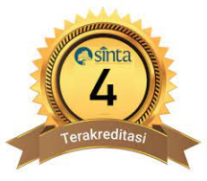Presentation and Readability Techniques of PjBL-Based Physics Worksheets in Circular Motion Material to Improve Student Collaboration
Abstract
Keywords :LKPD, presentation technique, legibility, circular motion.
Full Text:
PDFReferences
REFERENCES
Ningsih, A. F., Wibowo, F. C., & Astra, I. M. (2023, January). DEVELOPMENT OF LKPD Based on Stem-Project Based Learning on Electromagnetic Induction Material. inPROCEDURE OF THE NATIONAL PHYSICS SEMINAR (E-JOURNAL) (Vol. 11).
Himala, S. P. T. (2016). Readability of activity-based textbook texts on material in the scope of biology for class X SMA. Biology Education Scientific Periodical (BioEdu), 5(3).
Tunga, M. F., Sumardi, Y., & Hasanah, D. (2021). Development of physics E-LKPD with a project based learning model on direct current electric circuit material for class XII students at SMA Negeri 1 Sedayu.COMPTON: Scientific Journal of Physics Education, 8(1), 34-41.
Kusumaningrum, S., & Djukri, D. 2016. Development of Project Based Learning (PjBL) Model Learning Tools to Improve Science Process Skills and Creativity.Journal of Science Education Innovation. 2(2), 241-251.
Sujana, G.A., & Sopandi,P.H.W. 2019. Innovative Learning Models Theory and Implementation. Bandung: PT Rajagrafindo Persada.
Sriningsih, R. R., & Wijayanti, A. (2019). How to develop inquiry-based science worksheets for junior high schools? Natural: Scientific Journal of Science Education, 6(1), 34–42.
Rahmawati, E. V., Ernawati, T., & Ayuningtyas, A. D. (2020). LKPD based on understand, feel, do (tri nga) to develop science process skills for class VIII SMP.JIPVA (Journal of Veterans Science Education), 4(2), 189-203.
Yasa, K. N. (2013). Accuracy of Readability Formulas as a Determinant of the Effectiveness of Indonesian Language Texts. Journal of Education and Teaching, 46(3).
Kurniasari, D. A. D., Rusilowati, A., & Subekti, N. (2014). Development of an integrated science supplement book with the theme of listening to grade VIII.Unnes Science Education Journal, 3(2).
Susilawati, S., Amilda, A., & Sairi, A. P. (2020). Development of Student Worksheets (LKPD) Physics Based on Project Based Learning (PjBL) on Optical Instrument Material.Al'Ilmi: MIPA Education Journal, 9(1), 44-50.
Syaflita, D. (2019). Project-based LKPD validation for class VIII science learning. inPhysics National Seminar (Vol. 1, No. 1, pp. 251-256).
DOI: http://dx.doi.org/10.24036/14750171074








